Looking for a guide to help you install Ubuntu on Windows using VirtualBox? If yes, you have stumbled upon the right webpage.
Although Ubuntu is amongst the most stable and beginner-friendly Linux distros, replacing it with Windows is a big commitment. It takes some time for beginners to adapt to the Linux environment, but thankfully, Ubuntu is extremely easy to hop on.
On the other side, VirtualBox gives you complete freedom. You can explore the full-fledged Ubuntu OS without worrying about misconfiguring anything. And once you get comfortable with Ubuntu-environment, you can either dual boot or fully replace Windows with Ubuntu.
If you are confused about whether you should replace Windows with Ubuntu or install Ubuntu on a virtual machine, you can read our detailed review on Ubuntu.
And if you decide to go with the virtual installation, this guide will help you install Ubuntu on Windows using VirtualBox.
So, without any further ado, let’s get started –
Prerequisites
Your computer must meet the recommended system requirements to install and run Ubuntu smoothly.
The recommended system requirements are –
- 4 GB of RAM
- 30 GB of Disk Space
- Reasonably powerful x86 hardware (Intel or AMD)
If your computer meets these requirements, you can install Ubuntu on VirtualBox on your computer very easily.
Download VirtualBox
The very first thing you need to do is download the latest version of VirtualBox. You can use this link to directly visit the download page.
Install VirtualBox
Now that you have downloaded VirtualBox, you need to install and configure it first. The installation process is quite simple and easy.
All you need to do is follow these simple steps –
- Navigate to the folder where you downloaded the VirtualBox installation file.
- Double-click on the VirtualBox setup file. It will trigger the VirtualBox installation wizard.

- Click on the Next button, choose the location where you want to install VirtualBox, and configure the custom setup options.
- Lastly, it will tell you that installing VirtualBox will reset the network interfaces. Select Yes to approve.

- After that, it will ask for some permissions. Allow them.
That’s it. The installation process will begin and will take a couple of minutes, depending on your system’s performance.
Download Ubuntu
Although I am expecting that you must have already downloaded the latest stable version of Ubuntu, here is just a reminder. In case you haven’t downloaded it yet, you can follow this link to directly visit and download the latest version of Ubuntu.
Set Up VirtualBox to Install Ubuntu
Now that the VirtualBox has been installed, let’s configure it to install Ubuntu.
For this, you need to follow these simple steps –
- Launch Oracle VM VirtualBox.
- Click on the New button.
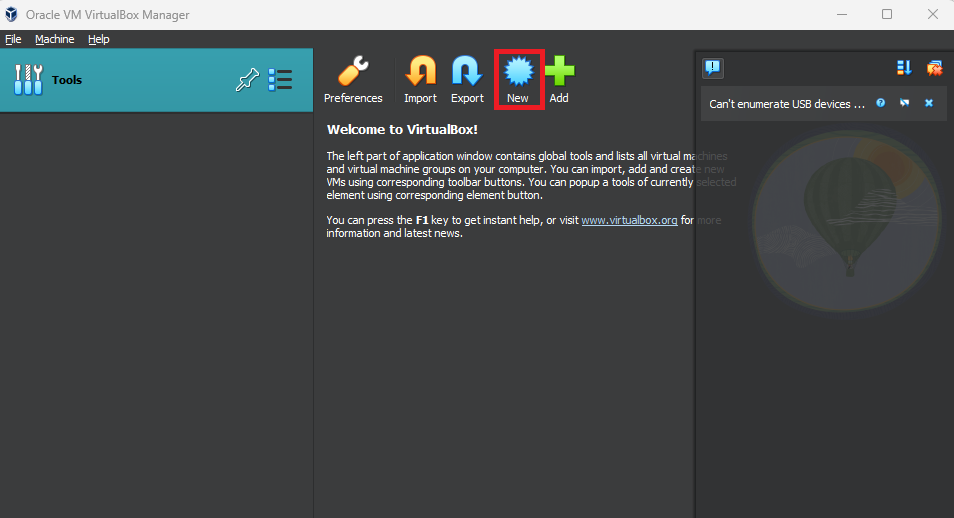
- Give your virtual machine a name and select the Ubuntu ISO file that we downloaded earlier. Ensure the Checkbox associated with Skip Unattended Installation is checked, and click the Next button.
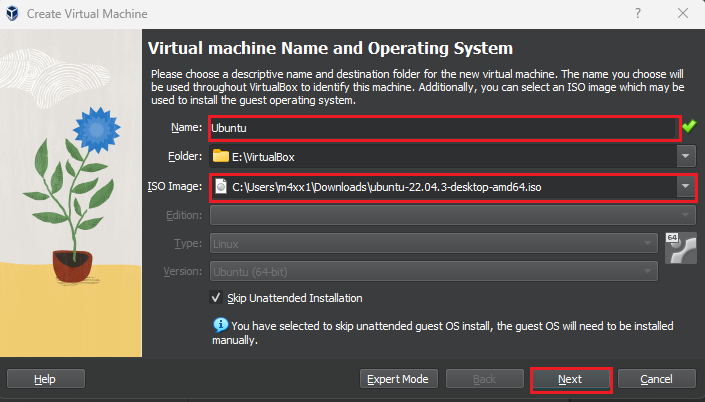
- VirtualBox will ask you to configure the Base Memory and Processors. Because I have a 6-core 12-thread processor and 16 GB of RAM, I will assign it three cores and 4 GB of RAM. You can configure it as per your system configuration, ensure EFI is enabled, and then click on the Next button.

- Next, it will ask you to create a Virtual Hard Disk that will contain your Ubuntu OS. Provide it at least 25 GB so you can install a couple of Ubuntu tools without any issues.
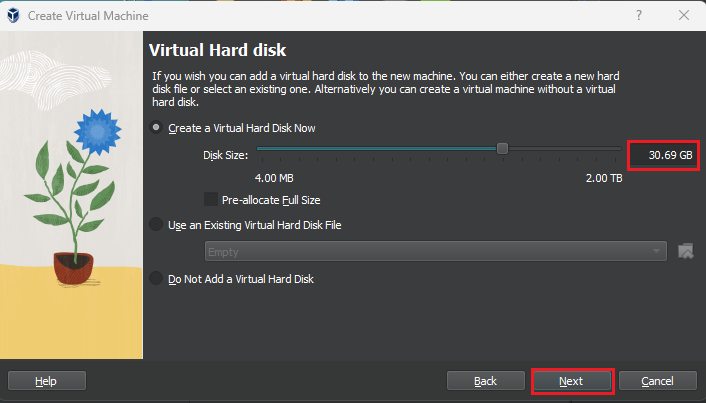
- After that, it will give you a summary of your configuration. Just click on the Finish button to proceed further.

Begin the Ubuntu Installation Process
Now that we have configured VirtualBox, let’s proceed with the installation of Ubuntu.
For this, you can follow these simple steps –
- Now, in the VirtualBox, select Ubuntu and click on the Start button.

- Select your preferred language and click on the Install Ubuntu option.
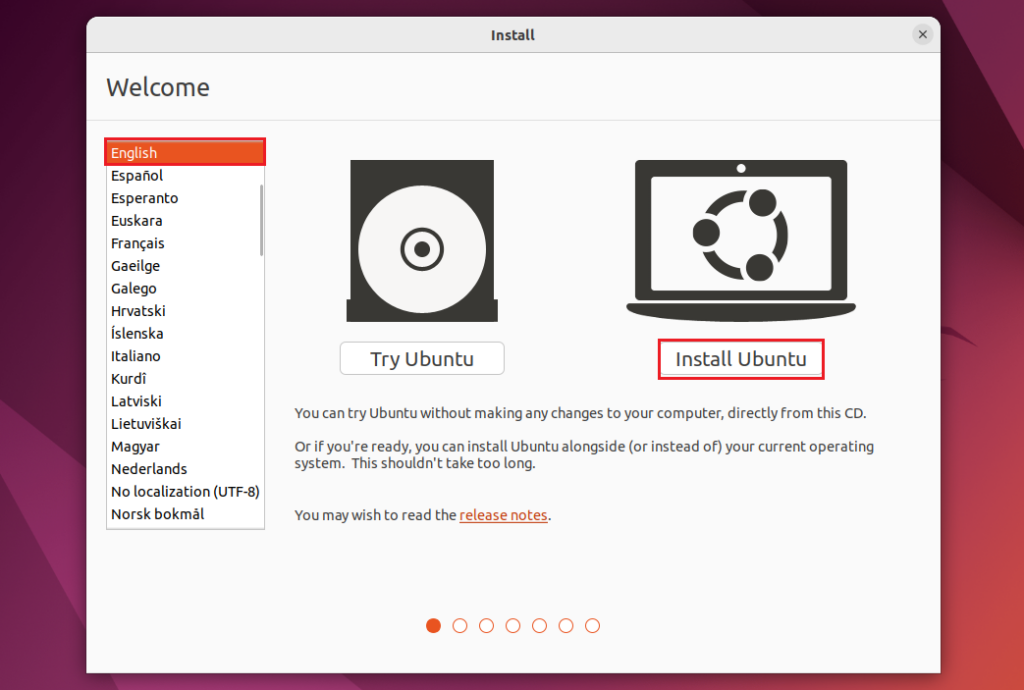
- Then select your Keyboard layout and language and click on the Continue button.

- After that, select the Normal installation and keep the Download updates while installing the Ubuntu option checked. And then click on the Continue button.

- Now, select the Erase disk and install Ubuntu option checked and then click on the Install Now option.
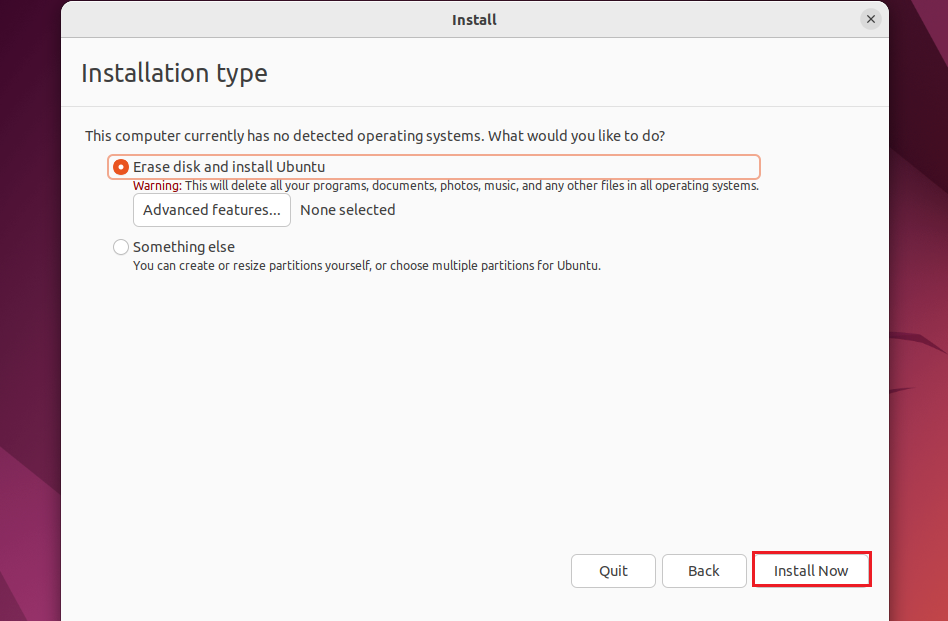
If any warning prompt appears on your screen, click the Continue button.
- After that, select the Time zone and click on the Continue button.
- Now, configure your user account information.
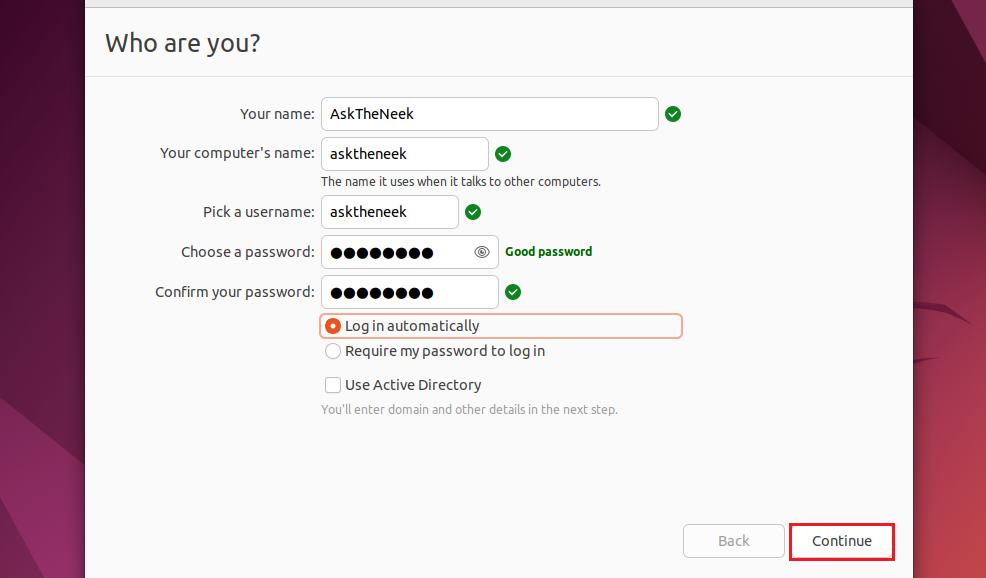
- After that, click on the Continue button, and it will initiate the installation. The installation process may take a couple of minutes.
- Click on the Restart Now option.
And boom, you have successfully installed Ubuntu on your Windows machine using VirtualBox.
Update Ubuntu
After Ubuntu has been installed on VirtualBox, the first thing you will notice is that you are not able to go into full-screen mode.

This is a very common issue and is quite easy to fix.
All you need to do is follow these simple steps –
- First, launch the Ubuntu machine on VirtualBox.
- Click on the Devices option at the top toolbar, then select the Insert Guest Additional CD image option.
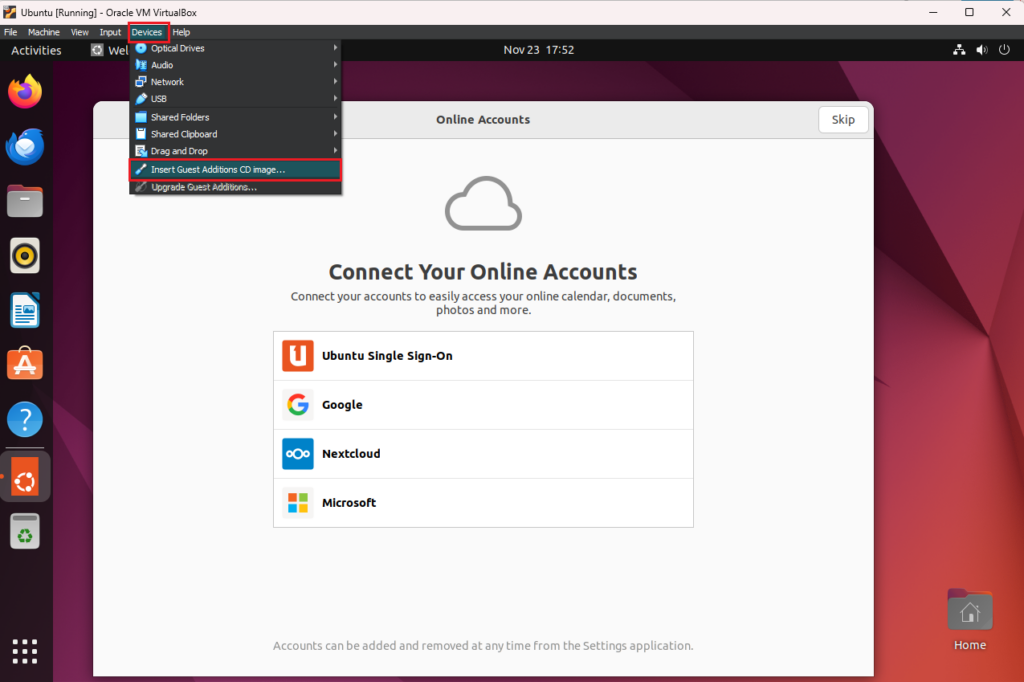
- Now, click on the Disk icon located at the taskbar. It will open a folder.
- Right-click inside this folder and select the Open in the terminal option.
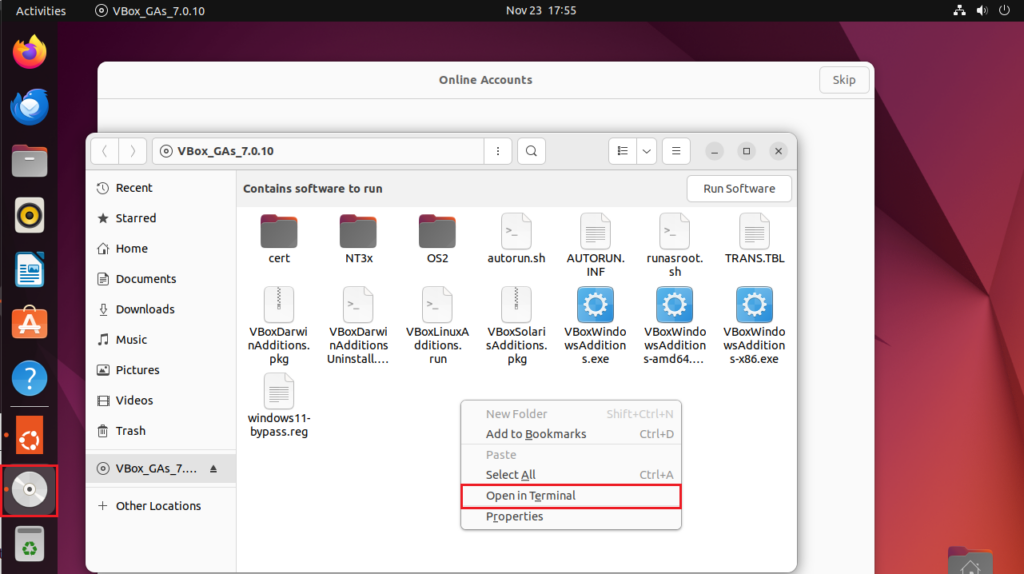
- After that, type the following commands one by one and hit Enter.
sudo apt update sudo apt upgrade
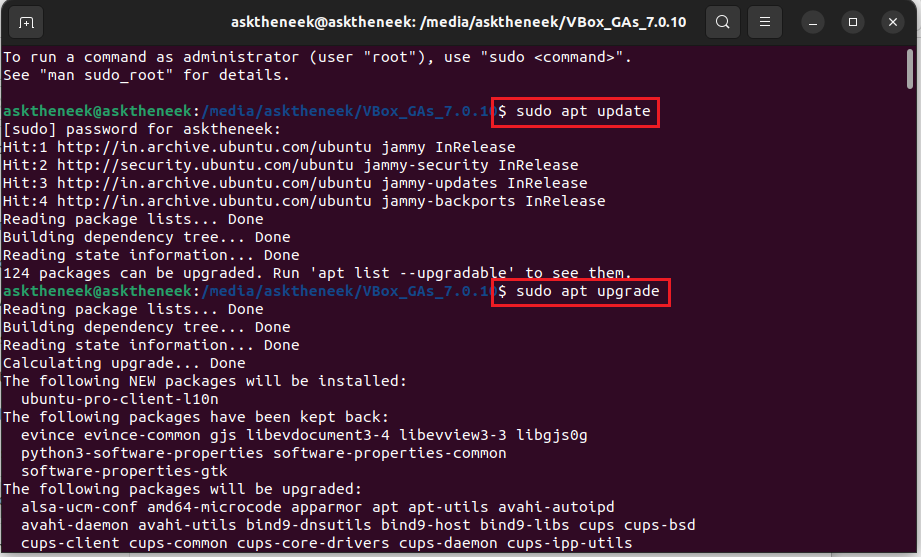
You will be asked to enter the password. Do that and wait for the update process to complete.
- Once the update completes, type this
./autorun.shcommand and hit Enter. It will again ask for authentication. Just enter your password and authenticate.
Once all the processes are completed, restart the VirtualBox as well as the Ubuntu machine.
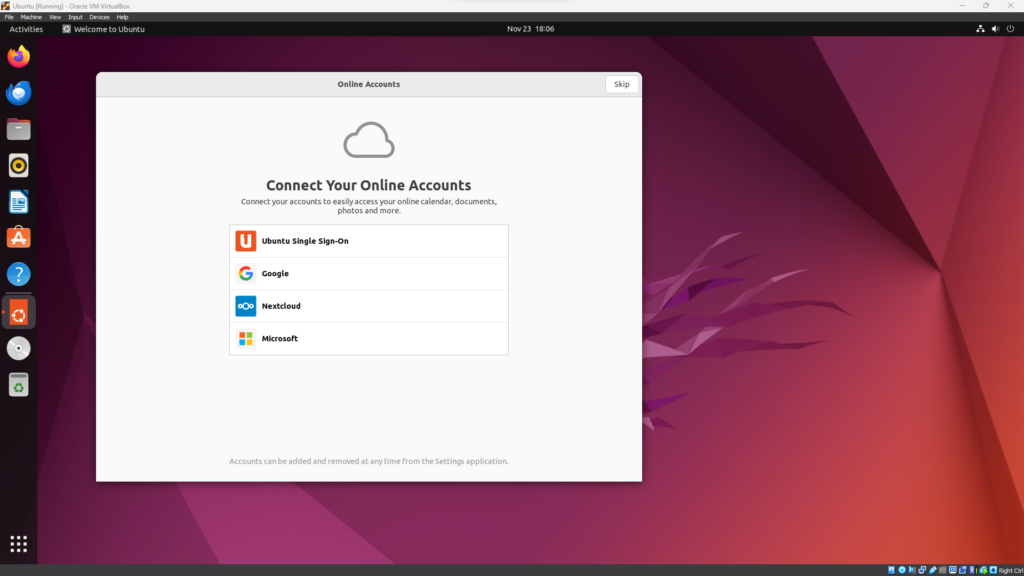
And now you will be able to go full-screen mode in Ubuntu.
Closing Comments
There you have it – a detailed guide covering information on how to install Ubuntu on Windows using VirtualBox.
Installing Ubuntu on VirtualBox provides a convenient and risk-free way to explore and familiarize yourself with the Linux operating system without affecting your primary system. In a virtual environment, the process is notably streamlined compared to a normal installation on physical hardware.
The virtual machine setup allows for easy customization of system resources, such as RAM and storage, providing flexibility based on your specific requirements. This contrasts with a normal installation where hardware limitations may be more rigid.
It further allows for the creation of snapshots, enabling users to revert to a previous state if anything goes wrong during the installation or subsequent configurations. This snapshot capability is a powerful feature absent in a traditional installation, where rollbacks involve more complex procedures.
With that said, here I am wrapping up this article. I hope it was a helpful read for you.
In case you have any questions, feel free to shoot them in the comment section below. Our team will try to respond ASAP.
